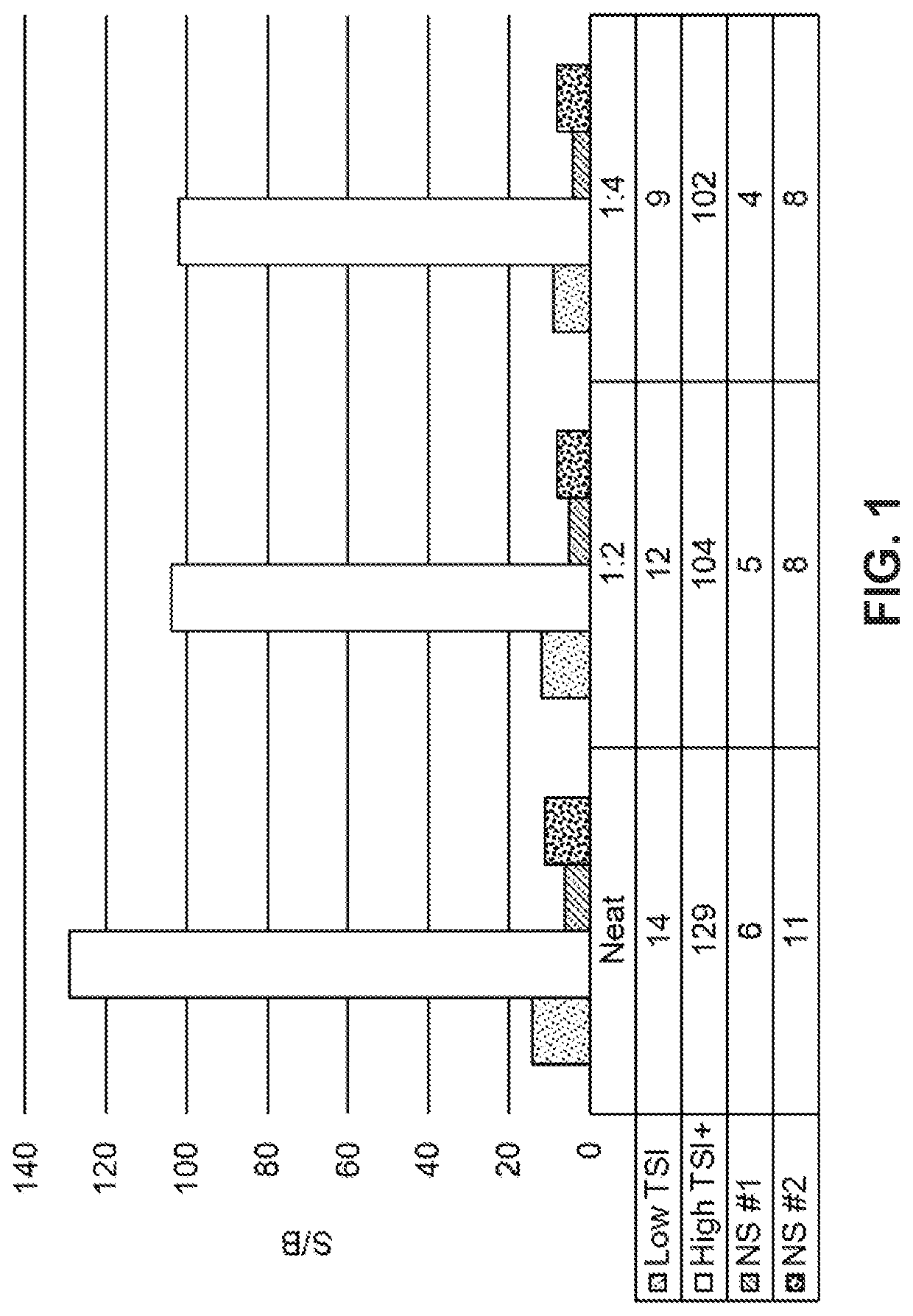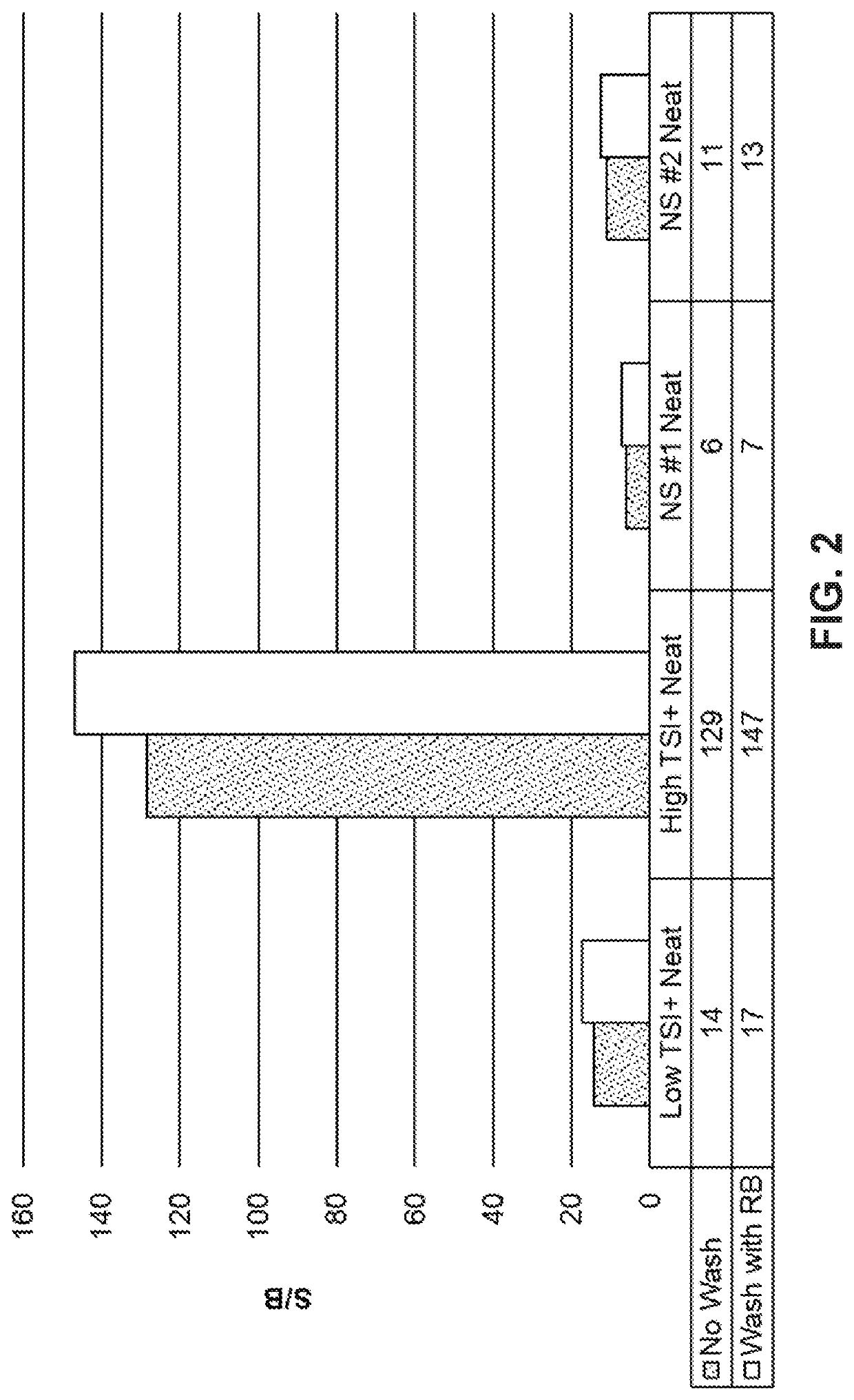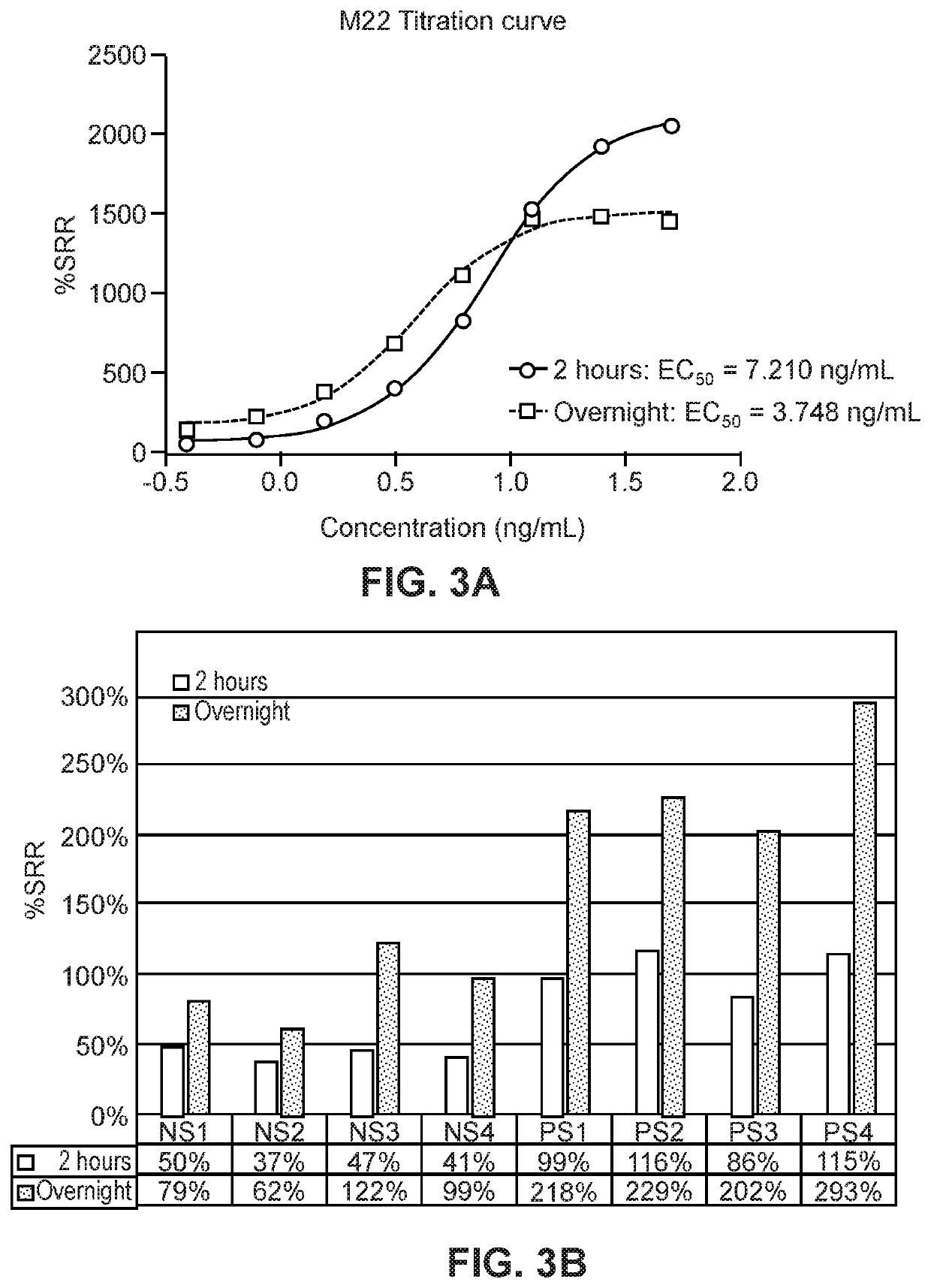Compositions, kits, and methods for detecting autoantibodies
a technology of autoantibodies and kits, applied in the field of thyroid disease diagnosis, can solve the problem that the detection system of type serology is ineffective in distinguishing inhibitory from stimulatory biological effects
- Summary
- Abstract
- Description
- Claims
- Application Information
AI Technical Summary
Benefits of technology
Problems solved by technology
Method used
Image
Examples
example 1
Assay for Detecting Thyroid-Stimulating Immunoglobulins (TSIs)
[0115]This Example describes development of an improved method to detect thyroid-stimulating immunoglobulins (TSIs) in a sample. In the improved method disclosed herein, samples are incubated with doubly transgenic cells expressing (1) a chimeric thyroid stimulating hormone receptor (TSHR) receptor on its cell surface, and (2) a modified luciferase fused to a cAMP binding-protein. Binding of the chimeric TSHR receptor, such as to a thyroid-stimulating immunoglobulin in a sample, leads to cAMP signaling within the transgenic cells. cAMP binds to the cAMP binding-protein, which causes a conformational change in the modified luciferase that enhances the modified luciferase's activity. When the modified luciferase cleaves its substrate, a light signal is generated. Signals are then read from the incubation mixture without lysing the cells.
[0116]Thus, this method allows, among other things, kinetic measurements over time (e.g....
example 2
Specificity of Assays to Detect Thyroid-Stimulating Antibodies
[0140]To assess the specificity of the presently disclosed TSI assay described in Example 1, serial dilutions of a thyroid-blocking antibody (K170) and of a thyroid-stimulating antibody (M22) were tested concurrently. As shown in FIG. 8, the presently disclosed TSI assay was very sensitive to M22 stimulation and reached a plateau at 50 ng / mL. In contrast, K170 did not induce luciferase activity in the presently disclosed TSI assay, even at the highest tested concentration of 1000 ng / mL (FIG. 8).
[0141]The ChR4 receptor has been shown to interact with both the stimulating antibody M22 and the blocking antibody K170 in the THYRETAIN® TSI assay. To determine whether thyroid blocking antibodies interact with the ChR4 receptor in the presently disclosed TSI assay, 10 ng / mL M22 was mixed with serially diluted (1000 ng / mL-2 ng / mL) K170 and two other mouse TSHR blocking antibodies 3H10 (DSMZ, Braunschweig, Germany) and 4C1 (Santa ...
example 3
An Assay for Detecting Thyroid-Blocking Autoantibodies
[0144]The present Example demonstrates a method for detecting thyroid-blocking immunoglobulins (TBIs) in a sample.
[0145]Samples and three assay controls (reference, positive and negative) are added to a multi-well microtiter plate in duplicate (10 μL per well). Reaction buffer (RB) containing an optimal concentration of bovine TSH is added to each well of the plate (50 μL per well).
[0146]CHO-ChR4 / 22F cells generated as described in Example 1 are thawed and resuspended in RB containing 12% GLOSENSOR™ substrate. Fifty microliters of the cell suspension is added to each well of the plate; the final concentration of the GLOSENSOR™ substrate is 6%.
[0147]Luminometer readings are taken from each well as described in Example 1, except for the following modifications.
[0148]Bovine TSH (thyroid-stimulating hormone) is added to each well (except for one or more control wells) after adding samples. The following controls are also used:[0149](...
PUM
| Property | Measurement | Unit |
|---|---|---|
| Fraction | aaaaa | aaaaa |
| Fraction | aaaaa | aaaaa |
| Fraction | aaaaa | aaaaa |
Abstract
Description
Claims
Application Information
 Login to View More
Login to View More - R&D Engineer
- R&D Manager
- IP Professional
- Industry Leading Data Capabilities
- Powerful AI technology
- Patent DNA Extraction
Browse by: Latest US Patents, China's latest patents, Technical Efficacy Thesaurus, Application Domain, Technology Topic, Popular Technical Reports.
© 2024 PatSnap. All rights reserved.Legal|Privacy policy|Modern Slavery Act Transparency Statement|Sitemap|About US| Contact US: help@patsnap.com










